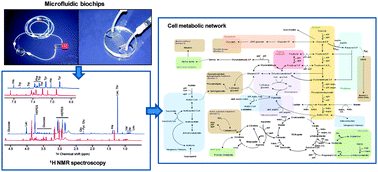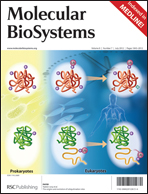Metabolomics-on-a-chip and metabolic flux analysis for label-free modeling of the internal metabolism of HepG2/C3A cells†
Abstract
In vitro microfluidic systems are increasingly used as an alternative to standard Petri dishes in bioengineering and metabolomic investigations, as they are expected to provide cellular environments close to the in vivo conditions. In this work, we combined the recently developed “metabolomics-on-a-chip” approach with metabolic flux analysis to model the metabolic network of the hepatoma HepG2/C3A cell line and to infer the distribution of intracellular metabolic fluxes in standard Petri dishes and microfluidic biochips. A high pyruvate reduction to lactate was observed in both systems, suggesting that the cells operate in oxygen-limited environments. Our results also indicate that HepG2/C3A cells in the biochip are characterized by a higher consumption rate of oxygen, presumably due to a higher oxygenation rate in the microfluidic environment. This leads to a higher entry of the ultimate glycolytic product, acetyl-CoA, into the Krebs cycle. These findings are supported by the transcriptional activity of HepG2/C3A cells in both systems since we observed that genes regulated by a HIF-1 (hypoxia-regulated factor-1) transcriptional factor were over expressed under the Petri conditions, but to a lesser extent in the biochip.


 Please wait while we load your content...
Please wait while we load your content...